Sensors already equip a range of tools to enhance monitoring capacity for conservation. Some of the higher bandwidth technologies, like camera traps and acoustic monitoring systems, have been essential elements of the conservation toolkit for decades, and thus have enough users that we've created dedicated WILDLABS groups to address them. But a whole range of lower bandwidth sensors beyond these core technologies are being increasingly integrated into conservation monitoring systems, and offer rich new insights into the wildlife and ecosystems we're all working to protect. As with many technologies, cost and access have historically been challenges to the adoption of new sensors, but with low-cost and open-source solutions on the rise, we're excited to see what the future of this space holds.
Getting Started with Sensors:
- Watch Shah Selbe's Tech Tutors episode on scaling FieldKit, an open-source conservation sensor toolbox, from a project to a successful conservation tech product.
- Check out our Virtual Meetup about Low-Cost, Open-Source Solutions in conservation tech, including a talk by Alasdair Davies on the Arribada Initiative's work with thermal sensors in early warning systems.
- For a more in-depth introduction, watch the first video in our datalogger mini-series: Freaklabs: How do I get started with Arduino?
In this group, you'll meet others who are using and innovating diverse sensors in their work, discuss ways to make sensors more effective & accessible for conservationists, learn about what sensors are already helping us accomplish in the field, and have the opportunity to ask and answer questions. Join this group to get started!
Header image: Emma Vogel, University of Tromsø
- @LisaG
- | she/her/hers
- 0 Resources
- 1 Discussions
- 13 Groups
Sensing Clues Foundation



- 0 Resources
- 44 Discussions
- 9 Groups
MSc Engineering / IoT Engineer / Nature Enthusiast
- 0 Resources
- 0 Discussions
- 8 Groups
Senior Wildlife Research Scientist
- 0 Resources
- 0 Discussions
- 7 Groups
- 0 Resources
- 0 Discussions
- 3 Groups
Fauna & Flora



- 0 Resources
- 41 Discussions
- 6 Groups
- 0 Resources
- 0 Discussions
- 7 Groups
Technologist - Electronics - Sensors
- 0 Resources
- 0 Discussions
- 2 Groups
- 0 Resources
- 5 Discussions
- 8 Groups
Frontier Labs
Creators of seriously good bioacoustic recorders. Celebrating 10 years of excellence in bioacoustic tech in 2021

- 0 Resources
- 11 Discussions
- 2 Groups
- 0 Resources
- 1 Discussions
- 6 Groups
- 2 Resources
- 10 Discussions
- 10 Groups
The Smithsonian National Zoo & Conservation Biology Institute is seeking a Postdoctoral Research Fellow to help us integrate movement data & camera trap data with global conservation policy.
22 April 2024
In a recent publication we tested Underwater Passive Acoustic Monitoring (UPAM) as a feasible non-invasive technique to study the calling behavior of therathened aquatic Andean frogs under natural conditions in the...
6 April 2024
Article
You’re invited to the WILDLABS Variety Hour, a monthly event that connects you to conservation tech's most exciting projects, research, and ideas. We can't wait to bring you a whole new season of speakers and...
22 March 2024
This funding opportunity is to support projects to enhance existing, high TRL (7-9) marine biogeochemical sensors and integrate with National Marine Equipment Pool’s autonomous underwater platforms. You must be based...
11 March 2024
The IQOE Task Team on Low-Cost Hydrophones for Research, Education, and Citizen Science is looking for industry partners to develop a low-cost hydrophone.
15 December 2023
Funding
With $60,000, $30,000, and $10,000 grants available for 14 outstanding projects, the support of engineering and technology talent from Arm (the leading semiconductor design company), and access to the world’s biggest...
1 December 2023
Article
Read our interview with Clementine Uwamahoro, African Parks’ Country Manager in Conservation Technology overlooking technology operations for both Akagera National Park and Nyungwe National Park.
29 November 2023
The Department of Applied Ocean Physics and Engineering (AOPE) at the Woods Hole Oceanographic Institution (WHOI) seek to hire 1-2 scientists at any of the Assistant/Associate/Senior Scientist levels to develop research...
27 November 2023
TagRanger® is a state-of-the-art wildlife finding, monitoring and tracking solution for research, conservation and environmental professionals. With superior configurability for logging data, reporting location and...
23 November 2023
Yale University & Map of Life Rapid Assessments - XPRIZE
8 November 2023
Yale University & Map of Life Rapid Assessments - XPRIZE
8 November 2023
Yale University & Map of Life Rapid Assessments - XPRIZE
8 November 2023
February 2023
January 2023
| Description | Activity | Replies | Groups | Updated |
|---|---|---|---|---|
| Hi everyone, @craig joined last month's Variety Hour to chat about Tagranger, which you can read more about here. A TagRanger®... |
|
Biologging, Connectivity, Sensors | 1 week 6 days ago | |
| 'Most importantly, we have to make it play a MIDI version of the DoctorWho theme song when you arm the device. That has to be the #1 feature if you ask me!' Seconded! |
+9
|
Acoustics, Biologging, Emerging Tech, Open Source Solutions, Sensors | 2 weeks ago | |
| Sounds good. Just sent you a private message. |
|
Climate Change, Conservation Tech Training and Education, Sensors | 2 weeks 1 day ago | |
| This is so cool @Mauricio_Akmentins - congrats and look forward to seeing your project evolve! |
|
Acoustics, Biologging, Climate Change, Conservation Tech Training and Education, Data management and processing tools, Emerging Tech, Open Source Solutions, Protected Area Management Tools, Sensors, Software and Mobile Apps | 3 weeks 1 day ago | |
| First things first, our team, @jcguerra10, @hefca, and myself, is thrilled to share with immense pride... |
|
Build Your Own Data Logger Community, Data management and processing tools, Sensors | 4 weeks 2 days ago | |
| Hi @Henrikcox I hope you are well. I am not sure if you may remember myself and my colleague from CLS. We had a meeting and met in-person at Earthranger last year. ... |
+15
|
Human-Wildlife Conflict, Sensors | 1 month ago | |
| Unless you are planning on making a mesh network between nodes then the total distance spanning the location of all the nodes is important to know, not just the intra node... |
|
Sensors, Protected Area Management Tools | 2 months ago | |
| Hi Danilo. you seem very passionate about this initiative which is a good start.It is an interesting coincidence that I am starting another project for the coral reefs in the... |
|
Acoustics, AI for Conservation, Biologging, Camera Traps, Citizen Science, Climate Change, Community Base, Connectivity, Drones, Emerging Tech, Human-Wildlife Conflict, Open Source Solutions, Sensors, Software and Mobile Apps, Wildlife Crime | 2 months 3 weeks ago | |
| Real nice video. I'll have another look in the weekend in detail. |
+10
|
Acoustics, Community Base, Protected Area Management Tools, Remote Sensing & GIS, Sensors | 3 months ago | |
| Fire detection is a sort of broad idea. Usually people detect the products of fire, and most often this is smoke.Many home fire detectors in the US use a radioactive source... |
|
Community Base, Conservation Tech Training and Education, Data management and processing tools, Ethics of Conservation Tech, Human-Wildlife Conflict, Open Source Solutions, Protected Area Management Tools, Sensors, Wildlife Crime | 3 months 1 week ago | |
| Thank you for sharing! Super interesting, as we don't see many underwater stereo cameras! We also use Blue Robotics components in our projects and have found them reliable and... |
|
Sensors, Camera Traps, Marine Conservation | 4 months ago | |
| I am working on a prototype to detect and alert for temic & karbadust. They are used for the poisoning of waterholes in South Africa.... |
|
Sensors | 4 months ago |
IoT breakthrough - applications for wildlife conservation?
15 September 2017 3:10pm
Thermal cameras and wildlife
26 July 2017 6:51pm
21 August 2017 12:17pm
Abstract here from the IMC Congress in Perth, they found the higher-res versions are much better than the less expensive (e.g. iphone) versions when it comes to finding animals.
Now you see me: How thermal imaging increases detection of cryptic nocturnal mammals in tropical regions
Avril Underwood1 , Mia Dehre-Miller2 1. James Cook University, Smithfield, Queensland, Australia 2.
University of Lancaster, Lancaster, United Kingdom Accurate measures of species abundance and distribution underpin effective wildlife management and conservation strategies. Obtaining these data is very challenging when researching the cryptic nocturnal arboreal mammals of in the dense forest of the Wet Tropics. Our research shows that using a hand-held thermal imager significantly increases the detection rate of all mid-sized arboreal mammals when compared to the most commonly used method of spotlighting. We determine the optimal environmental and mechanical parameters for thermal imaging, and we investigate ‘cost-versus-result’ of hand-held imaging devices currently available on the market. We suggest that hand-held thermal imaging is a great emerging technology for cryptic arboreal mammal detection across tropical forested regions and beyond.
21 August 2017 12:20pm
My own experience is with the FLIR iphone attachment, just informal testing, but hasn't been that great at finding animals. I also think it would work better in the early AM. In the evening there can still be a lot of rocks and trees still warm from the sun.
Funding Opportunity: Leverage space technology for wildlife protection
6 July 2017 12:56pm
Leverage Space Technology for Wildlife Protection with the European Space Agency Kick-start Grant
5 July 2017 12:00am
Trialing Audiomoth to detect the hidden threats under the canopies of Belize
 Andrew Hill
Andrew Hill
27 June 2017 12:00am
Biomaker Challenge - up to £1000 support for prototyping sensors and instrumentation related to biology
19 June 2017 3:46pm
19 June 2017 3:51pm
Hey Jenny,
Thanks for sharing this, looks really interesting! In addition to WILDLABS members potentially getting involved, it'd be great to hear about some of the projects that get developed through the challenge. It looks like they're all going to be shared openly on github! Perhaps you could highlight or direct folks here to any as they emerge that you think might be particularly relevant?
Steph
19 June 2017 4:03pm
Hi Steph
Sure - we'll have the projects confirmed by 30 June and I can highlight ones that might be of interest!
Jenny
From the Field: Eric Becker and designing sensors for wildlife
22 May 2017 12:00am
acoustics for Human-Wildlife Conflict Prevention, Anti-poaching, and more
27 April 2017 6:43pm
From the Field: Dr Raman Sukumar and Technology Developments Needed to Conserve Elephants
5 April 2017 12:00am
Lasers in the Jungle Somewhere: How Airborne LiDAR Reveals the Structure of Forests
 Phil Wilkes
Phil Wilkes
4 April 2017 12:00am
Heat Maps
2 March 2016 3:18pm
31 March 2017 10:45am
Hi @AdamBloch
I'd like to know more about your setup. I'm monitoring temperatures on a nature reserve using an array of 100 iButton Thermocron temperature sensors. I'm interested in what the benefits of using Arduino and Raspberry Pi might be. I need to collect my sensors in and read through a USB device. Then there's the interpolation and plotting of the data, and I'm particularly interested in how you are filtering and querying your data i.e. 'selectable [time?] range'.
Thanks
31 March 2017 9:49pm
Hi Thomas
We are mapping a very small area in real time. The data rate is controlled by the time it take to read all the DS18B20s. The logger I use in the Octogons is using about 90 sensors and refreshes about every 5 to 15 seconds. The data is store as a CSV in series of files.
Best thing to do is drop me a PM and your number.
Many thanks
Adam
15 Risks and Opportunities for Global Conservation
 Olivia Bailey
Olivia Bailey
31 March 2017 12:00am
From the Field: Paul Millhouser and tracking migrating kestrels with low cost, light based geolocators
 Paul Millhouser
Paul Millhouser
29 March 2017 12:00am
The Noise Egg: Testing the Effects of Underwater Noise on Aquatic Animals
27 March 2017 12:00am
From the Field: María José Bolgeri and tech to alleviate Puma-Human conflict
 María José Bolgeri
María José Bolgeri
22 March 2017 12:00am
Photogrammetry: mapping caves and other environments
19 January 2017 11:46am
8 March 2017 1:49pm
Hi Ollie,
You can do the photogrammetry without a drone. You just need a tripod and a camera. The drone is useful because it can move to locations automatically ensuring that you have correct overlap but in caves you obviously will not have the GPS signal you need for most off the shelf units to navigate.
Thom mentioned to me a device called a Zebedee, which should do what you are hoping for. I don't know anyone who has one though and I'm afraid I don't have a LiDAR unit to lend.
Tom
8 March 2017 1:54pm
A colleague showed me this last week - laser scanning in Nottingham's 'caves' - scroll down and check out the video.
http://tparchaeology.co.uk/caves/caveswebsite/index.htm
8 March 2017 2:03pm
For good measure, here's some cave survey porn of Hang Son Doong cave in China.
https://www.youtube.com/watch?v=tOH4gbW18Ts
#Tech4Wildlife Photo Challenge: Our favourites from 2016
1 March 2017 12:00am
A hive of activity – CAD designers are crafting an open future for bees
20 December 2016 12:00am
Conservation Leadership Programme 2017 Award
21 November 2016 12:00am
5 Smart Technologies That Will Crack Down On Wildlife Trafficking
14 November 2016 12:00am
Neotropical Migratory Bird Conservation Act grants via USFWS
8 November 2016 12:00am
How do Wildlife Crime Experts view Remote Sensing Technologies used to Combat Illegal Wildlife Crime?
7 November 2016 12:00am
Using GoPro cameras? Why not get sponsored by them?
29 December 2015 9:40pm
31 October 2016 2:47pm
Sport, Music, Event, Film/Photo are the only options I see on that link - nothing for conservation research.
1 November 2016 1:09pm
All of it can be applied to conservation though!
1 November 2016 1:45pm
I am not suggesting that GoPro cameras do not have applications in conservation, but if you follow the link you posted you will find questions being asked that a conservation project will be unable to answer.
Zoohackathon: 'END LOOP - Coding to end wildlife trafficking'
22 September 2016 12:00am
Perspectives from the World Ranger Congress
 John Probert
John Probert
10 August 2016 12:00am
Has technology provided a one-stop measure to halt albatross bycatch in fisheries?
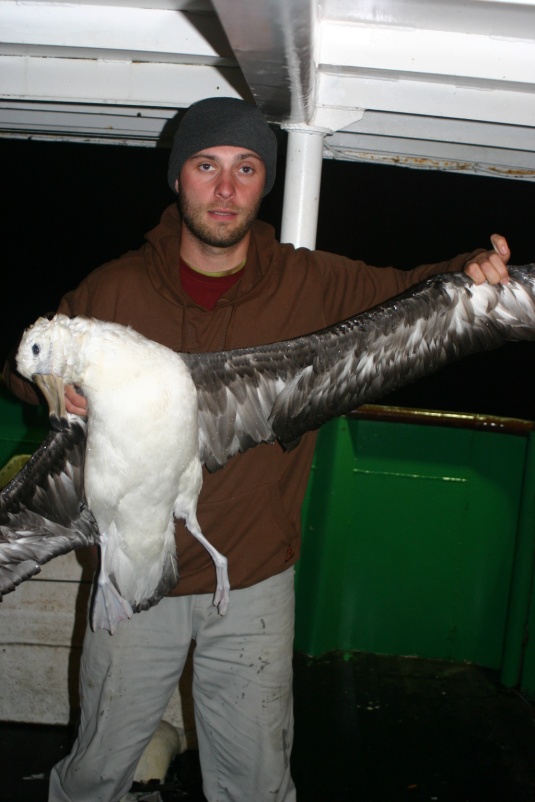 Oliver Yates
Oliver Yates
5 August 2016 12:00am
How can technology help us monitor those small cold-blooded critters that live in caves?
 Tony Whitten
Tony Whitten
25 July 2016 12:00am
Passive Acoustic Monitoring: Listening Out for New Conservation Opportunities
 Ammie Kalan
Ammie Kalan
29 June 2016 12:00am
Wildlife Crime Tech Challenge Accelerator Bootcamp
 Sophie Maxwell
Sophie Maxwell
24 June 2016 12:00am
Science Makers: sensor networks on 2 July
22 June 2016 8:09am
22 June 2016 4:04pm
Thanks for sharing this event, Jenny! Looks really interesting, hope to see you there.






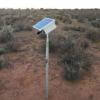





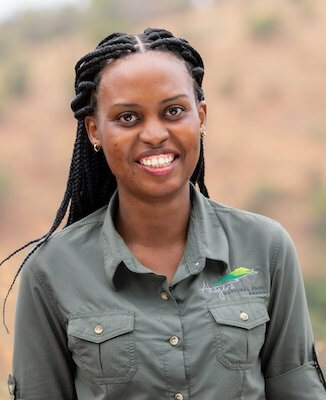




















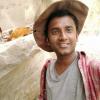


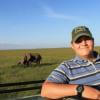
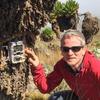
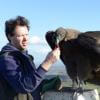
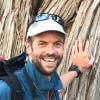

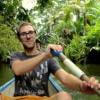
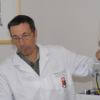
26 July 2017 8:33pm
Oh, cool! It'd be interesting seeing if it could be used for tracking as well. I've used some handheld cameras and looked at footprints, but those disappeared pretty quickly.